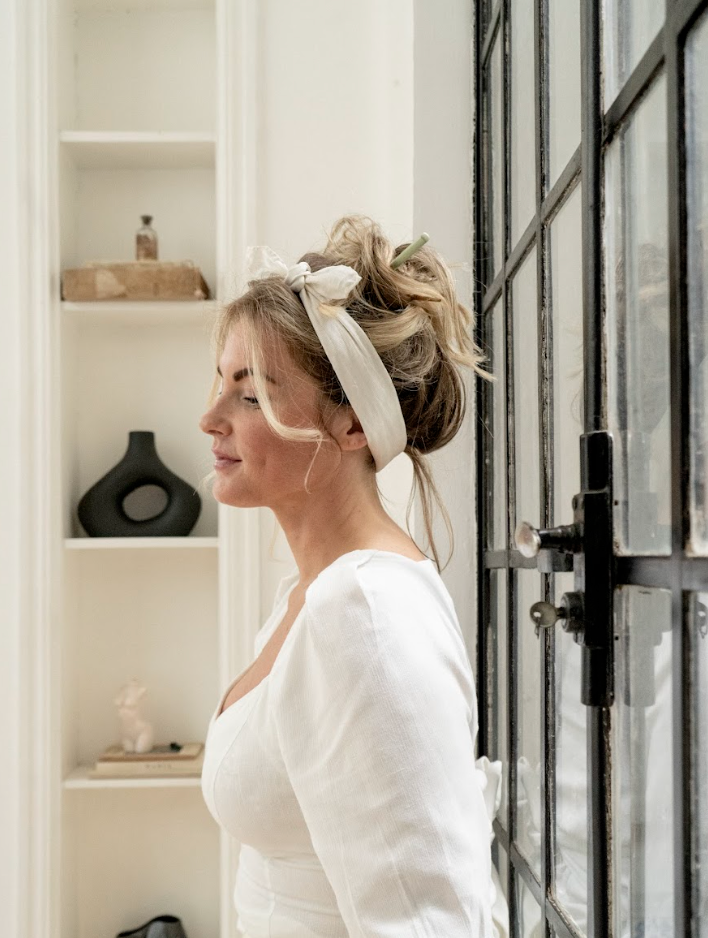By Hilary Metcalfe
For something so intimate, so physical, and emotionally consuming, the IVF process is startlingly transactional. You walk into the fertility clinic with hope. You walk out with a quote.
It’s often the first moment many realise: this isn’t just a medical journey. It’s a major financial one.
Many people are prepared—at least intellectually and conceptually—for the hormone injections, egg collections, and the waiting. But very few are prepared for the costs that build over time. Not just the clinic bill, but the ripple effects: the add-ons, the hidden fees, the emotional toll of investing thousands into something that offers no guarantees.
If you’re starting IVF or even considering it, this is the financial landscape you deserve to understand, fully.
What the Clinics Say It Costs
On paper, one cycle of IVF in the UK is typically quoted between £4,000 and £7,000. In the US, the average per cycle is $12,000 to $18,000. That sounds manageable, until you realise it often covers only a portion of what you’ll actually go through.
The core “IVF cycle” price often excludes:
-
Medication: £1,000–£3,000 per cycle
-
Embryo freezing and storage: £300–£600/year
-
ICSI (if needed): £1,000–£1,500
-
Frozen embryo transfers (FETs): £1,200–£2,500
-
Genetic testing (PGT-A or PGT-M): £2,000–£4,000
-
Routine scans and blood tests
And those are just the medical items. One woman we spoke with described budgeting £7,000 for a cycle, only to realise she had spent more than £16,000 within 18 months, without factoring in time off work or support services.
The Costs That Never Make the Price List
Then there are the expenses that come without an invoice but drain your resources all the same:
-
Time off work: for scans, injections, retrieval, recovery
-
Travel and accommodation: if your nearest clinic is far
-
Complementary care: acupuncture, nutrition consultations, counselling
-
Supplements and fertility-enhancing therapies
-
Childcare for existing children during appointments
These costs can add thousands more. And because they’re rarely discussed, many patients feel blindsided, or worse, ashamed, when they find themselves financially overwhelmed.
NHS Funding: What You Need to Know
In the UK, IVF is sometimes funded through the NHS, but access is not equal, and eligibility criteria vary widely by region.
The National Institute for Health and Care Excellence (NICE) recommends up to three funded cycles for women under 40 who meet certain criteria. But local Integrated Care Boards (ICBs) make the final call, and many don’t follow these guidelines.
Eligibility often depends on:
-
Age: typically under 40 (some allow one cycle for 40–42)
-
BMI: must fall within a strict range
-
Length of time trying to conceive (usually 2+ years)
-
Smoking status
-
Relationship status and whether you have previous children
For same-sex couples and single women, the process can be even harder. Some are required to self-fund multiple rounds of intrauterine insemination (IUI) before qualifying for NHS IVF, putting enormous strain on personal finances just to prove infertility.
For a comprehensive guide to NHS IVF funding in your area, visit:
Fertility Network UK – IVF on the NHS
Budgeting for the Unknown
Trying to financially plan for IVF is like packing for a long journey without knowing the destination, or whether you’ll arrive.
Here’s how fertility experts suggest preparing:
1. Plan for More Than One Cycle
Many couples require multiple rounds before achieving a pregnancy. Budgeting for one can create false expectations.
2. Ask for a Full Breakdown
Request an itemised quote that includes:
– Medication
– Scans
– Blood tests
– ICSI or FET procedures
– Sedation or anaesthesia fees
– Counselling sessions (sometimes legally required)
3. Explore Refund Packages or Multicycle Plans
Some clinics offer shared risk plans with partial refunds if treatment fails, but read the fine print. Age cut-offs and embryo quality restrictions apply.
4. Check Your Private Insurance or Employer Benefits
In the US, some companies now offer fertility benefits (e.g., Google, Starbucks, Amazon). In the UK, a few employers offer private insurance that includes limited fertility treatment.
5. Build a Realistic Cushion
Plan not just for the treatment but also for emotional support, transportation, dietary changes, and recovery time.
6. Consider going offshore — destination IVF
If it’s within your means and you have flexibility around work/travel, some countries (especially in Europe) offer high-quality IVF care at significantly lower cost.
-
For example, in Spain a standard IVF cycle with own eggs can range from approximately €3,600 to €6,700. Fertility Clinics Abroad+2Fertility Clinics Abroad+2
-
IVF with donor eggs in Spain may range from about €5,900 to €8,500. fertilityroad.com+1
-
Advantages: excellent medical facilities, experienced specialists, relatively lower cost. qunomedical.com+1
-
Things to check: travel/visa rules, which costs are included (meds, transport, accommodation), legal eligibility (single women, same-sex couples), success rates.
What It Feels Like to Spend This Much on a Maybe
There is a unique kind of grief that comes with spending your savings, and your energy, on something that might never work.
Some women feel shame for having spent too much. Others regret not doing more, or doing it sooner. Some question how long to keep trying. Others wonder how long they can afford to.
No matter how carefully you plan, IVF will test more than your finances. It will test your sense of time, control, and hope.
And yet, most keep going, not because they’re naïve, but because they know the cost of not trying might be even harder to live with.
Essential Questions to Ask Your Clinic
Before you begin, ask:
-
What is included in the quoted cycle cost?
-
What are average medication costs for your patients?
-
How many cycles does your average patient need?
-
Are scans and bloodwork included?
-
Are there counselling requirements?
-
What does embryo freezing and storage cost per year (you may be looking at long term storage of spare embryos if it goes well first time)?
-
What happens if I need a frozen embryo transfer later?
And always ask for every cost in writing. Clarity protects you.
The Price of a Dream
You can budget. You can plan. You can spreadsheet every injection and scan. But the reality of IVF isn’t just numbers, it’s negotiation. Between hope and reality. Between what you can afford and what you are willing to risk. Between the dream of becoming a parent and the systems that make that dream feel conditional.
The financial side of IVF is often silent because it’s uncomfortable. But silence leaves people unprepared. It keeps fertility treatment in the realm of privilege. And it isolates the very people who most need community and clarity.
They should tell you that it’s okay to ask. To plan. To hesitate. And to change your mind.
Because this isn’t about a luxury. This is about possibility of a family. And for many, IVF is the most radical act of hope they will ever choose, and some clinics can take advantage of that, don’t let this happen to you. Don’t ever feel pressured from fear or “last chance” always pause and take a moment before making this type of very impactful and expensive decision. Your body and wealth, will thank you for it.
Further Resources
-
Fertility Network UK (IVF & NHS access by region):
https://fertilitynetworkuk.org/ivf-on-the-nhs/ -
Human Fertilisation & Embryology Authority (HFEA):
Official regulator of fertility treatment in the UK. Includes clinic comparisons and treatment guides.
https://www.hfea.gov.uk -
Tommy’s Fertility Hub:
Offers advice, community stories, and tools to navigate infertility and treatment.
https://www.tommys.org/pregnancy-information/fertility -
The Evewell IVF Cost Guide:
Detailed breakdown of treatment options and cost comparisons across clinics.
https://www.evewell.com/ivf-costs/ -
Resolve: The National Infertility Association (US-based):
https://resolve.org
ABOUT HILARY
Hilary is the Co-Founder of the SABI, a Holistic Nutritionist, natural, whole foods Chef, product developer and advocate for women getting to know their bodies, cycles and selves better. Born in Los Angeles, California and raised in Baja California, Mexico, she now lives in Los Cabos with her partner Kees, a curly-tailed rescue dog from Curacao, Flint and her rainbow babies Paloma and Bea.
HORMONAL & PROUD
Created as a brand to help women navigate the toughest moments in pregnancy, childbirth, postpartum — and practically every stage of life, the SABI aims to change the narrative around our hormones from one of taboo, embarrassment and loneliness, to awareness and even pride. Much more than a wellness brand, SABI offers a carefully crafted line of products to carry you through your hormonal journey; a set of rituals, supportive tools, and ancient herbal remedies that have been tested time and again by women and now, backed by medicine. SABI is a blend of science and nature conceived by women who have experienced the joys and deep implications of bringing a child into the world, the pains of a heavy and difficult period, miscarriage and difficulty conceiving
Here is an invitation to get to know your body and its cycles better and to really understand what is going on inside. Learn to use your hormonal cycle to your advantage no matter your stage of life, and know that you can always support and balance your hormone levels. Look for the right sources of information, know that there is help, and know that you’re supported.
DISCLAIMER
The SABI blog and articles are not meant to instruct or advise on medical or health conditions, but to inform. The information and opinions presented here do not substitute professional medical advice or consultations with healthcare professionals for your unique situation.
















